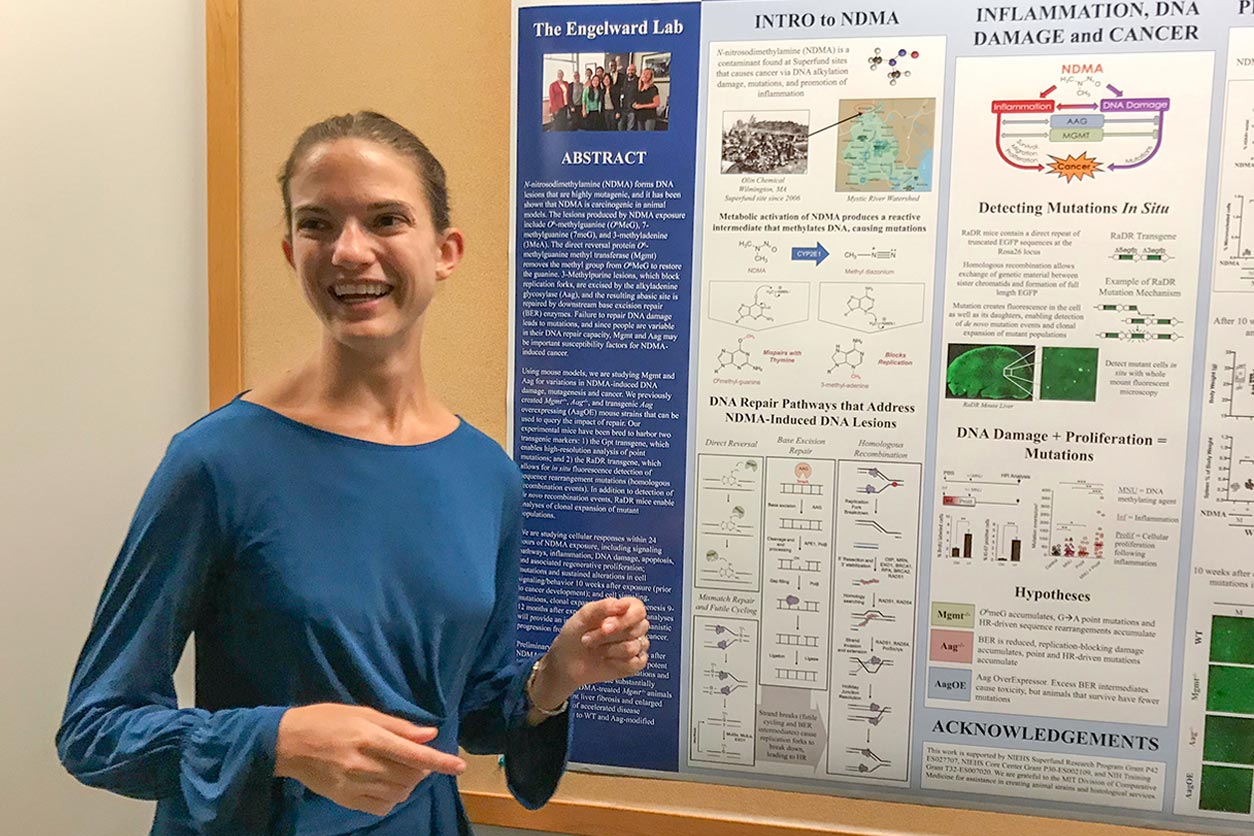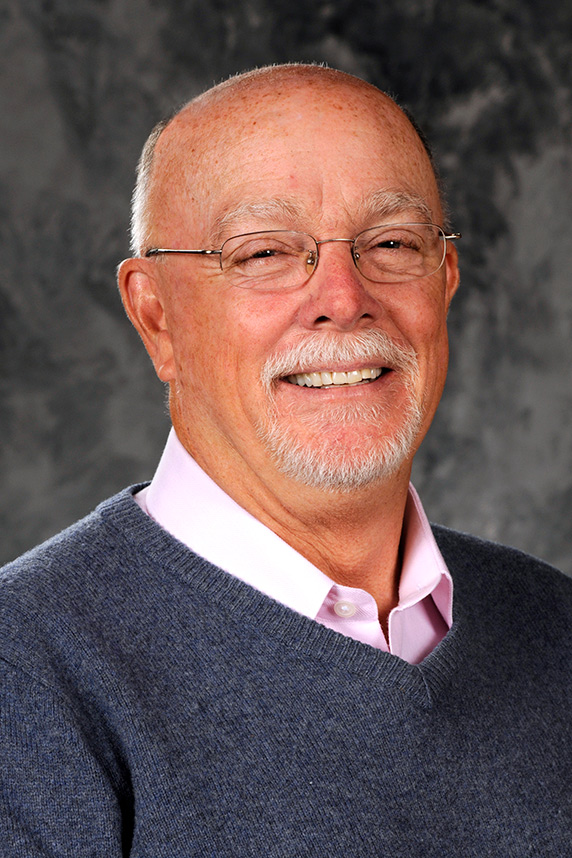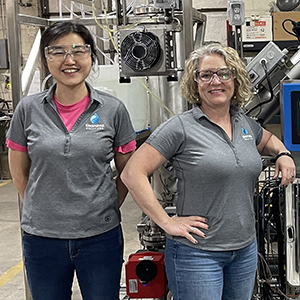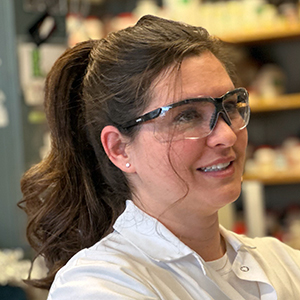On Dec. 14, during the NIEHS Superfund Research Program (SRP) Annual Meeting, Jennifer Kay, Ph.D., was named the 23rd winner of the Karen Wetterhahn Memorial Award. Kay studies how genetic factors affect susceptibility to mutations and cancer following exposure to N-nitrosodimethylamine (NDMA). That compound is one contaminant found at the Olin Chemical Superfund Site in Wilmington, Massachusetts.
“Jenny has a firm understanding of how to translate research to improve the lives of others,” said SRP Director William Suk, Ph.D. “She is well on her way to being an outstanding researcher, as Karen was.”
“I firmly believe in lifting up the disadvantaged, and in addition to promoting public health and environmental justice, I aim to promote underrepresented minorities in STEM education, as did Dr. Wetterhahn,” Kay said. “I aspire to her enduring legacy of research excellence, environmental concern, scientific mentorship, and social justice.”
 Kay, shown here presenting her research, set up a blog as MIT RTC director. A post about NDMA led people to reach out to her with concerns about the contaminant. (Photo courtesy of Jenny Kay)
Kay, shown here presenting her research, set up a blog as MIT RTC director. A post about NDMA led people to reach out to her with concerns about the contaminant. (Photo courtesy of Jenny Kay)Kay completed her Ph.D. under the direction of Bevin Engelward, Ph.D., at the Massachusetts Institute of Technology (MIT) SRP Center. As a postdoctoral fellow, Kay directed the center’s Research Translation Core (RTC). Earlier this year, she moved to a research scientist position at Silent Spring Institute.
Factors that affect susceptibility
 Suk leads the NIEHS Hazardous Substances Research Branch, which supports all aspects of the Superfund Hazardous Substances Basic Research and Training Program. (Photo courtesy of Steve McCaw / NIEHS)
Suk leads the NIEHS Hazardous Substances Research Branch, which supports all aspects of the Superfund Hazardous Substances Basic Research and Training Program. (Photo courtesy of Steve McCaw / NIEHS)Kay developed a specialized mouse model to research first-generation mutagenesis — cell types that mutate — and clonal expansion of mutant cells, which refers to cell division that creates a population of cells with the same mutation.
She has made fundamental discoveries related to DNA repair activity of two genes — the methylguanine methyltransferase gene (Mgmt) and the alkyladenine glycosylase gene (Aag). Together, they are responsible for repairing more than 80% of the DNA damage caused by NDMA.
Mgmt repair activity prevents new mutations from forming and halts clonal expansion. In an upcoming paper, Kay and her team demonstrate that the absence of Aag significantly increases susceptibility to mutations and cancer, but too much Aag results in toxicity and animal death. Knowing a person’s Aag activity levels might help characterize their level of risk for toxicity or cancer.
“Given the importance of NDMA as a contaminant in the environment, in drinking water, and in food, Jennifer’s contributions to our understanding of the molecular mechanisms of NDMA-induced mutations and cancer contribute fundamentally to our ability to intervene,” said Engelward.
Equity and justice
As director of the MIT Research Translation Core, Kay worked with the Wilmington Environmental Restoration Committee (WERC) in Massachusetts. Members of WERC led the effort to get Olin listed on the National Priorities List. They continue to fight for speedy, effective remediation.
Along with MIT SRP Center leadership, Kay visited Maine to learn about Native Americans’ environmental health concerns. They wanted to determine how the center could contribute to solutions focused on local contaminants and environmental justice concerns.
 Kay, far left, discussed Olin Chemical Superfund Site cleanup activities with members of WERC. (Photo courtesy of Jenny Kay)
Kay, far left, discussed Olin Chemical Superfund Site cleanup activities with members of WERC. (Photo courtesy of Jenny Kay)Effective science, connecting people
“I am one of the dwindling few who knew Karen Wetterhahn, and Jenny reminds me a lot of Karen in her ability to do basic science that has impact on people and [in] her natural ability to connect people together,” noted SRP researcher John Essigmann, Ph.D. “She is an excellent match for the Wetterhahn Award.”
At Silent Spring Institute, which emphasizes women’s health and environmental justice, Kay continues community-based public health research and remains involved in SRP research.
Her primary emphasis now is integrating mechanisms of genotoxicity, inflammation, and hormonal signaling to clarify the biological networks that link chemical exposures to cancer. Understanding these pathways can foster classification of chemicals by biological effects, opening new approaches for preventing or reducing disease risk.
(Natalie Rodriguez is a research and communication specialist for MDB Inc., a contractor for the NIEHS Superfund Research Program.)









